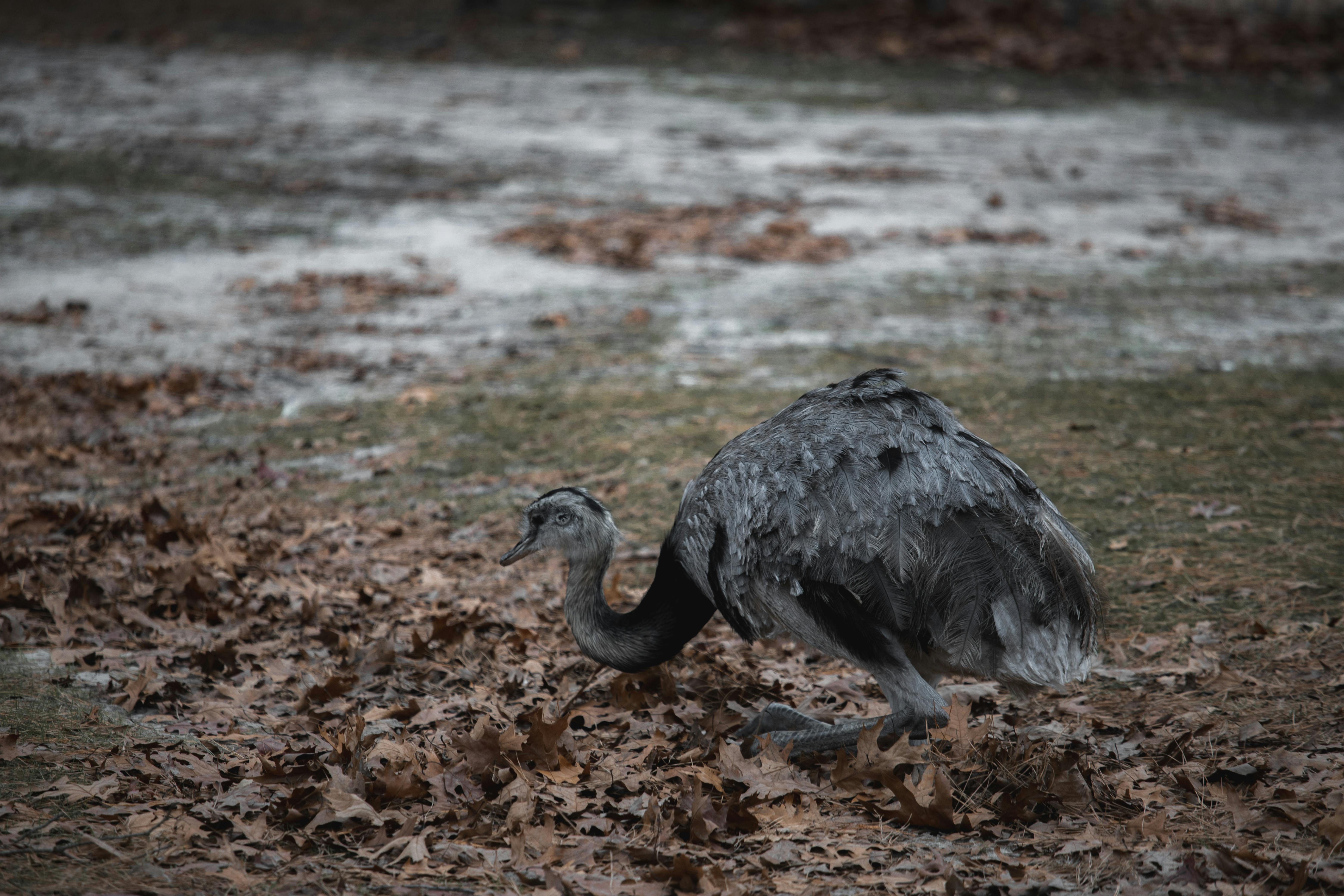Blueberries are a delicious and popular fruit that are enjoyed by people all over the world. However, they can be vulnerable to frost, which can severely damage the crop and reduce yields. Fortunately, there are some measures that can be taken to protect blueberries from frost. In this article, we will discuss how to protect blueberries from frost in order to maximize yield.To protect blueberries from frost, there are several things you can do. First, cover the plants with a floating row cover or frost blanket before the temperature drops. This will help to trap the heat and shelter the plants from cold winds. Second, prune any dead or diseased branches and leaves from the bushes, as this will encourage more air circulation and help keep them warm. Lastly, water the bushes thoroughly before a freeze to help insulate them from the cold temperatures.
Choosing the Right Variety of Blueberries for Your Area
Selecting the right variety of blueberries for your area is key to ensuring a successful harvest. It is important to research the different varieties and determine which one will be most suitable for your climate and soil conditions. Blueberry plants need full sun in order to produce an abundant crop, so it is important to pick a variety that can thrive in your area’s climate.
It is also important to consider the soil type in your area when selecting a blueberry variety. Different varieties of blueberries require different soil types, so you will need to determine what type of soil you have before you select a variety. Sandy soils are usually best for blueberry production. If your soil is clay-based, it may be necessary to add organic matter and fertilizer to improve the quality of the soil before planting.
The length of the growing season should also be taken into consideration when selecting a blueberry variety for your region. Blueberries are classified into three categories based on their chill hour requirement – early, midseason, and late-season varieties. Early season varieties can begin flowering as early as March or April, while late season varieties may not flower until May or June. Selecting a variety that matches your local frost date will help ensure a successful harvest.
The size and flavor of the fruit should also be considered when selecting a blueberry variety for your region. Some varieties produce larger fruits with sweeter flavors than others, so it is important to research each variety before making a selection. Additionally, some varieties are more resistant to certain pests and diseases than others, so this should also be taken into account when making your selection.
By doing thorough research and taking all these factors into consideration when selecting a blueberry variety for your area, you can ensure that you get the most out of your harvest season. With careful planning and preparation, you can enjoy fresh-picked blueberries from your own backyard!
Growing Blueberries in Containers
Growing blueberries in containers is a great way to enjoy the delicious fruit without taking up too much space. While it may seem like a daunting task, with the right care and attention blueberry plants can thrive in containers. With a few simple steps, you can have fresh blueberries at your fingertips all summer long!
The first step in growing blueberries in containers is to select the right container. The container should be large enough to accommodate the size of the plant and have adequate drainage holes at the bottom. Clay or ceramic pots are ideal, as they help retain moisture and keep roots cool. Make sure you use a potting mix specifically designed for blueberry plants, as regular soil won’t provide enough nutrients.
The next step is to choose the right variety of blueberry plant for your area. Blueberries come in both highbush and lowbush varieties, so it’s important to select one that will thrive in your climate. Blueberry plants need full sun for 6-8 hours a day and should be planted in an area that receives plenty of light.
Once you’ve selected the right container and variety of plant, it’s time to prepare your soil. Blueberry plants prefer acidic soil with a pH level between 4-5. To achieve this level of acidity, mix peat moss or sulfur into your potting mix before planting. It’s also important to use a fertilizer specifically designed for acid-loving plants.
Once your plant is planted, it’s important to keep it well-watered but not over-watered. Blueberry bushes should be watered deeply once a week during dry spells or when temperatures are high. If you notice any wilting leaves or dry soil, increase watering frequency until conditions improve.
Lastly, you’ll want to provide extra support for your blueberry bush as it grows taller. A tomato cage or bamboo stakes can be used to hold up branches so they don’t become weighed down by heavy fruit. Pruning should also be done regularly throughout the growing season to encourage new growth and remove dead or diseased branches.
With proper care and attention, growing blueberries in containers can produce abundant harvests year after year! Not only are they delicious but they are packed with essential vitamins and minerals that make them an excellent addition to any diet. So what are you waiting for? Get started on growing your own delicious blueberries today!
Mulching Around the Base of Blueberry Bushes
Mulching is an important part of growing blueberry bushes. Mulch helps to maintain a consistent level of soil moisture, retain warmth and suppress weeds. It can also help to add organic matter to the soil, improving fertility and drainage. When mulching around blueberry bushes, it is important to choose the right type of mulch for the best results.
The best mulch for blueberries is one that is organic and made from natural materials such as bark, wood chips, pine needles or straw. Organic mulches are great because they will break down slowly over time, adding nutrients to the soil that can benefit your plants. Inorganic mulches such as gravel or plastic should be avoided as they can increase soil temperatures and dry out quickly.
It is important to keep a few inches of space between the base of your blueberry bush and the mulch layer. This helps prevent suffocation or root rot from too much moisture around the base of your plant. To ensure proper drainage, you may want to mix some coarse sand with your organic mulch before spreading it around your plant’s base.
When applying mulch, spread it in a thick layer 3-4 inches deep around the base of each bush but not touching its trunk or stems. This will help keep weeds away while retaining moisture and reducing erosion from wind and rain. Be sure to pull back any excess material that accumulates at the base of your plants throughout the season and replace it with new material when necessary.
Mulching around blueberry bushes can provide numerous benefits when done correctly. It helps conserve water, reduce weeds and improve soil fertility over time while also making your garden look more attractive!
Using Row Covers or Wall O’ Waters
Row covers are made of lightweight, permeable fabric that is draped over plants to create a microclimate of higher humidity and temperature. They can be used to protect young seedlings from frost and pests, or to extend the growing season for cold-sensitive crops. Wall O’ Waters are plastic tubes filled with water that can be secured around plants to create a mini-greenhouse effect. Both row covers and Wall O’ Waters can be effective tools for extending the growing season in colder climates. They should be used when temperatures begin to dip below freezing, as they will help keep soil temperatures warm and provide protection from frost damage. Be sure to remove the cover or tubes during the day when temperatures rise above freezing, as leaving them on too long can cause crops to overheat.

Sheltering Blueberry Bushes
Blueberry bushes need protection from the elements in order to thrive. There are several ways to shelter your blueberry bushes from the wind, sun, and cold. Firstly, you can erect a fence or wall around your blueberry bushes to block out any strong winds. This will also help keep out animals that might eat the berries or trample the plants. Secondly, you can provide shade for your blueberry plants by planting taller trees or shrubs nearby. This will help protect them from direct sunlight and provide some relief during hot summer days. Lastly, you can mulch around the base of your blueberry plants to help insulate them from cold temperatures in winter. Mulching also helps retain moisture in the soil, which is essential for healthy blueberry plants.
It is important to keep in mind that while sheltering your blueberry bushes is important, too much protection can be detrimental as well. Too much shade or wind protection can prevent air circulation which can lead to disease and pest problems. Also, too much mulch can cause waterlogging of the soil which can harm root growth. Therefore, it is important to find a balance between providing enough protection without over-sheltering your blueberries.
Watering Blueberry Bushes Before Frosty Weather
It is important to water blueberry bushes before frosty weather sets in. This will help the plants survive the cold temperatures and keep them healthy. Watering should be done in the late afternoon or evening, when temperatures are cooler and there is less evaporation. A good rule of thumb is to give each bush about 10 gallons of water per week. This will help the plants stay hydrated during the cold months and ensure that they remain healthy.
If possible, it is also a good idea to mulch around the base of each bush. Mulch helps hold moisture in the soil and can also provide some protection from extreme temperatures. Additionally, it can provide nutrients for the plants and help keep weeds away.
It is also important to prune your blueberry bushes before frosty weather sets in. Pruning helps promote growth by getting rid of old branches that may not produce as much fruit as new growth would. It also helps improve air circulation throughout the plant which can prevent diseases from spreading. Pruning should be done with sharp secateurs or pruning shears, and care should be taken not to damage any new buds or shoots that may have already begun to form on the plant.
Finally, if you live in an area where there might be a lot of frost, you may want to cover your blueberry bushes with burlap or other materials at night when temperatures drop below freezing. This will protect them from any extreme cold temperatures that might otherwise damage them and kill off their fruit-producing potential for the season ahead.
By taking these simple steps now, you can ensure that your blueberry bushes are well-prepared for frosty weather this winter season!
Pruning and Training Your Blueberry Bushes
Pruning and training your blueberry bushes is an important part of ensuring a healthy harvest. Pruning helps to encourage growth, maintain the size of the bush, and prevent disease. Training your blueberry bushes helps to keep them in shape and allows for easy access to the fruits. Here are some tips for pruning and training your blueberry bushes:
1. Prune your bushes in late winter or early spring before the buds begin to swell. Start by removing any dead or diseased branches. Then, thin out any overcrowded areas by removing some of the laterals (the smaller branches) and leave only those with healthy buds.
2. When training your blueberry bush, use a stake or trellis to support it as it grows taller. Make sure that you tie the branches loosely enough that they can move freely in the wind, but secure enough that they won’t break from strong gusts.
3. Train your blueberry bush to grow in one direction by bending and securing branches with twine or flexible ties as it grows. This will help keep the bush orderly and make harvesting easier.
4. When pruning, aim for a “bowl” shape with an open center so that air can circulate through the bush. This will help prevent disease and provide plenty of light for all parts of the bush.
5. Prune away any low-hanging fruit clusters so that they are out of reach from birds or other animals who may be tempted to eat them before you do.
By following these simple pruning and training tips, you will be able to maximize your blueberry harvest while maintaining a healthy plant for years to come.

Conclusion
Protecting blueberries from frost is a challenge for gardeners. There are several methods to help protect the plant, such as using row covers, sprinkling water, and utilizing wind machines. Each method can be used alone or in combination to provide maximum protection for your blueberries.
It’s important to remember that frost protection should be done as soon as possible, preferably before the temperature drops below freezing. Additionally, it is important to monitor the weather forecast for any unexpected cold fronts which could cause damage to unprotected plants. With careful planning and attention, you can help ensure that your blueberry plants thrive in even the coldest conditions.
Wrap Up
Protecting blueberries from frost is an essential part of gardening in areas where temperatures can drop below freezing. It’s important to use multiple methods of protection such as row covers, sprinkling water, and wind machines to ensure maximum protection for your plants. With careful monitoring of the weather forecast and swift action when needed, you can help keep your blueberry plants healthy during even the coldest winters.



